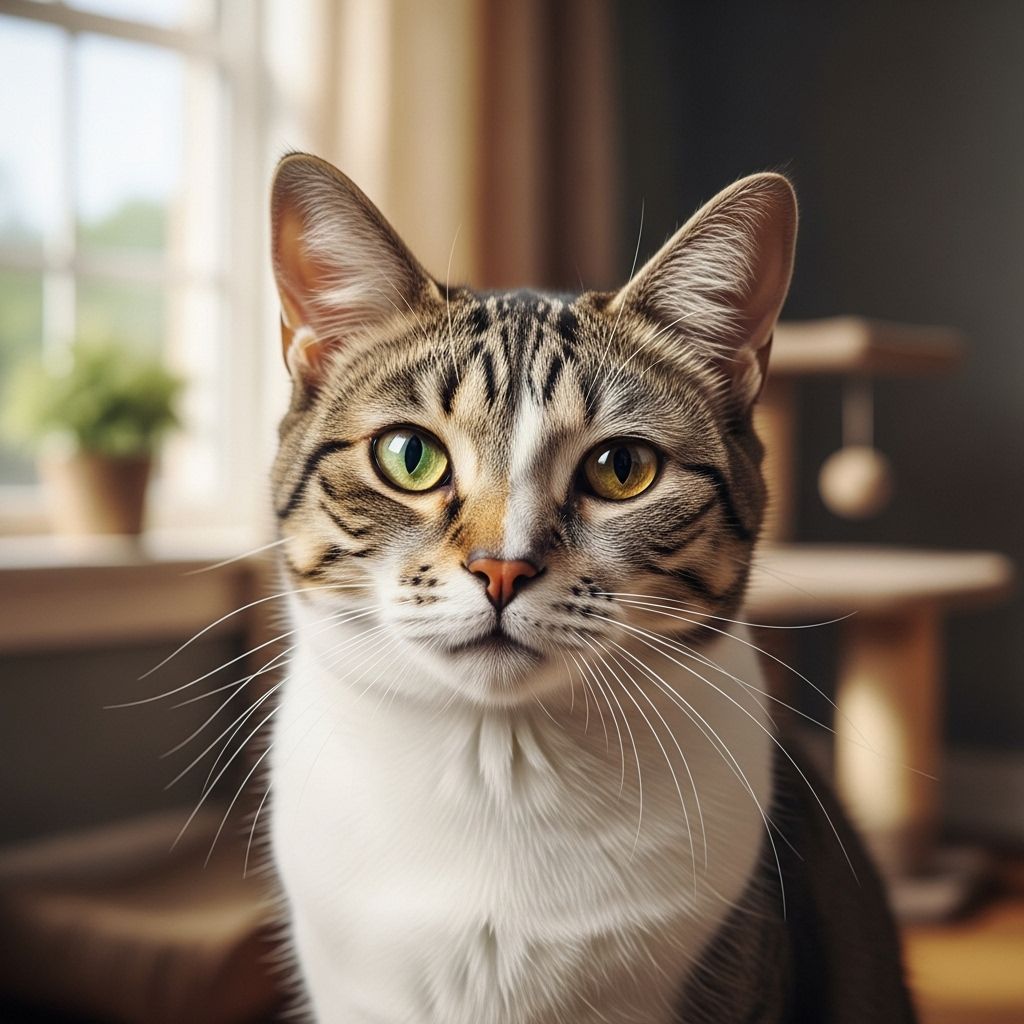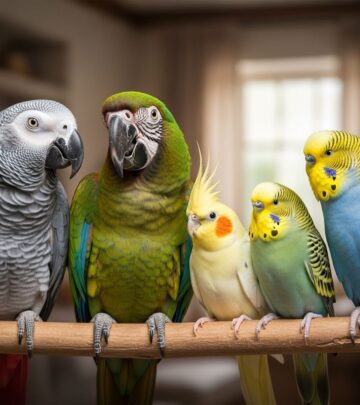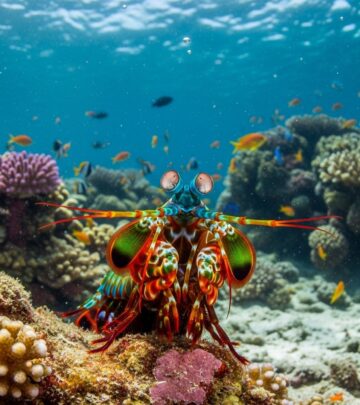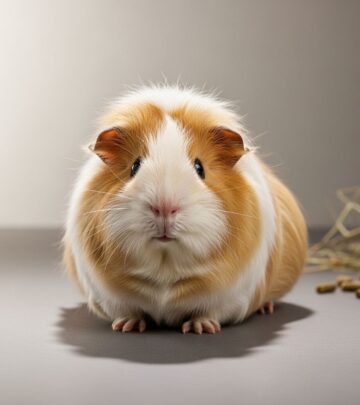Cat Age In Human Years: Comprehensive Guide To Feline Aging
Unlock your cat’s true age with our cat-to-human years guide, conversion charts, and expert tips for every stage of feline life.

Image: HearthJunction Design Team
How Old is My Cat in Human Years?
Cat lovers often wonder: how old is my cat in human years? Understanding your feline friend’s age in human years helps you provide the right care, anticipate health needs, and appreciate every stage of their life. This in-depth guide demystifies the cat-to-human years conversion, details the science behind feline aging, and offers practical advice for caring for your beloved pet as they grow.
Understanding Cat Years vs. Human Years
Unlike the simple ‘multiply by seven’ rule sometimes applied to dogs, translating cat years to human years is more nuanced. Cats mature far more quickly in their first two years of life, then age more steadily thereafter. This guide explains the widely accepted conversion method and shares useful charts so you can easily see how old your cat would be if they were human.
Key Conversion Points
- The first year of a cat’s life is equivalent to approximately 15 human years.
- The second year adds about 9 human years, making a 2-year-old cat roughly 24 in human years.
- For each year thereafter, add roughly 4 human years for every cat year.
This formula broadly aligns with how a cat’s body matures and highlights why a 1 or 2-year-old cat is much more “grown up” than a toddler or young child.
Cat Age to Human Years Conversion Chart
| Cat Age (Years) | Human Age Equivalent |
|---|---|
| 1 month | 6 months |
| 3 months | 4 years |
| 6 months | 10 years |
| 8 months | 15 years |
| 1 | 15 years |
| 2 | 24 years |
| 3 | 28 years |
| 4 | 32 years |
| 5 | 36 years |
| 6 | 40 years |
| 7 | 44 years |
| 8 | 48 years |
| 9 | 52 years |
| 10 | 56 years |
| 11 | 60 years |
| 12 | 64 years |
| 13 | 68 years |
| 14 | 72 years |
| 15 | 76 years |
| 16 | 80 years |
| 17 | 84 years |
| 18 | 88 years |
| 19 | 92 years |
| 20 | 96 years |
For kittens under a year, developmental milestones may be a better indicator than a strict numeric conversion. See the chart above for key references at each stage of your cat’s development.
Why Knowing Your Cat’s Age Matters
Understanding your cat’s ‘human age’ is more than a curiosity—it’s vital for:
- Appropriate healthcare: Preventive care and screenings can be tailored to your cat’s physiological age.
- Nutrition: Dietary needs shift as your cat moves from kittenhood to adulthood and into their senior years.
- Behavior and activity: Knowing what’s normal at a given stage can help you address potential problems quickly.
- Emotional well-being: Older cats may need more comfort and less stimulation, while kittens thrive on play and exploration.
Translating your cat’s age to human years gives you a practical perspective for all aspects of care.
Life Stages of a Cat
Cats go through several distinct life stages, each with its own milestones and care requirements:
- Kitten (0–12 months): Rapid growth, high energy, learning essential social and physical skills.
- Junior (1–2 years): Reaching full size, sexual maturity, increased independence.
- Prime (3–6 years): Peak health and activity—akin to a young adult human.
- Mature (7–10 years): Subtle signs of aging may appear; dietary and exercise needs may begin to shift.
- Senior (11–14 years): Noticeable slowing down; annual health checks and screenings become more important.
- Geriatric (15+ years): Vulnerable to age-related diseases; special care and comfort are essential for quality of life.
How to Tell Your Cat’s Age If You Don’t Know
If you adopted a cat without birth records, you can estimate their age using a few key indicators. While only a veterinarian can offer a precise assessment, these clues can help:
- Teeth: Young cats have clean, white teeth. Yellowing, tartar, or missing teeth are signs of maturity or senior years.
- Eyes: Clear, bright eyes with a smooth iris are typical of young cats. Older cats may show cloudiness or a grainy, ‘crackled’ iris texture.
- Coat: Kittens and young adults have soft, fine fur. Older cats may develop thicker, coarser, or patchy coats and may have graying fur.
- Muscle tone and bones: Young, active cats are muscular. Elderly cats often display boniness due to muscle loss.
A thorough vet exam is the best way to estimate a cat’s age if their history is unknown.
How Cats Age Compared to Humans
Cats age rapidly during the first two years—by age two, a cat is developmentally similar to a 24-year-old human. From that point, aging slows, and each cat year equates to about four human years. These differences reflect the cat’s unique biology:
- Rapid kitten development: Cats progress from helpless newborns to self-sufficient adults in just two years.
- Longevity: Many cats live 12–16 years, with some reaching their 20s—especially indoor and well-cared-for cats.
- Genetics and health: Breed, genetics, and preventive healthcare play a big role in a cat’s lifespan and overall health.
Average Life Expectancy of Cats
With good care, most domestic cats live between 12 and 16 years, though many reach 18 or older. Some factors influencing lifespan include:
- Indoor vs. outdoor lifestyle: Indoor cats tend to live longer due to fewer risks from traffic, predators, and disease.
- Diet and weight: Proper nutrition and a healthy weight are crucial for longevity.
- Preventive care: Vaccinations, parasite control, and regular vet visits help catch problems early.
Cat Aging Myths: Debunking the ‘Seven-Year Rule’
Contrary to popular belief, cats do not age at a rate of seven years per human year. Cats mature much more rapidly in their youth, reaching the equivalent of a young adult human within their first two years. The most accepted conversion is:
- Year 1 = 15 human years
- Year 2 = 24 human years
- Each subsequent year = 4 human years
This formula is more accurate and reflects the cat’s physical, behavioral, and medical milestones.
How to Keep Your Cat Healthy at Every Age
Kitten and Junior Years
- Feed a high-quality, age-appropriate diet
- Monitor growth and weight regularly
- Keep up with vaccinations and parasite prevention
- Promote socialization and play for mental and physical development
Prime and Mature Years
- Continue regular vet checkups (annually or as advised)
- Monitor weight and adjust diet as needed
- Encourage exercise to maintain muscle and prevent obesity
- Watch for behavioral changes that could signal health issues
Senior and Geriatric Years
- Increase vet checks to every six months
- Switch to senior cat food if recommended
- Provide extra warmth and comfort in your cat’s environment
- Watch for mobility issues, dental disease, and signs of pain
- Maintain a steady, low-stress routine
Frequently Asked Questions (FAQs)
How can I calculate my cat’s age in human years?
Use the standard conversion: Year 1 = 15 human years, Year 2 = 24, and each additional cat year = 4 human years. Refer to our chart for details.
How long do cats live on average?
With proper care, most cats live between 12 and 16 years. However, many cats reach 18 or older, especially those kept indoors.
Are certain breeds longer-lived than others?
Yes, some breeds like Siamese or Burmese cats are known for their longevity, but mixed-breed cats can also live long, healthy lives.
How can I estimate an adopted cat’s age?
Look at their teeth, eyes, coat, and muscle tone. A veterinarian can provide a more accurate estimate based on a comprehensive exam.
Is it true that one cat year equals seven human years?
No, cats mature much faster than this rule suggests. The widely accepted conversion is 15 human years for a cat’s first year, 24 at two, then four human years for each subsequent cat year.
How do I care for a senior cat?
Senior cats need more frequent vet visits, a diet tailored to their age, plenty of warmth, and extra patience as they may develop age-related health issues.
Key Takeaways
- Cats age rapidly in their first two years, then more gradually.
- Converting cat years to human years helps you understand your pet’s life stage and health needs.
- Regular wellness checks, proper diet, and a loving environment are keys to a long, happy feline life.
- Consult your veterinarian for age-specific advice and health checks—especially as your cat moves into their senior years.
Conclusion
Translating your cat’s age into human years gives you valuable insight into their development, needs, and care at every life stage. Use this guide and the accompanying chart to understand where your cat stands on the aging spectrum—and to give them the best life possible, from playful kittenhood through their golden years.
References
- https://www.purina.co.uk/articles/cats/senior/care/cats-age-in-human-years
- https://www.almanac.com/cat-age-chart-cat-years-human-years
- https://www.purina.com/articles/cat/behavior/understanding-cats/cat-years-to-human-years
- https://www.pumpkin.care/blog/cat-age-chart/
- https://www.companionveterinary.net/cat-years
Read full bio of Srija Burman












